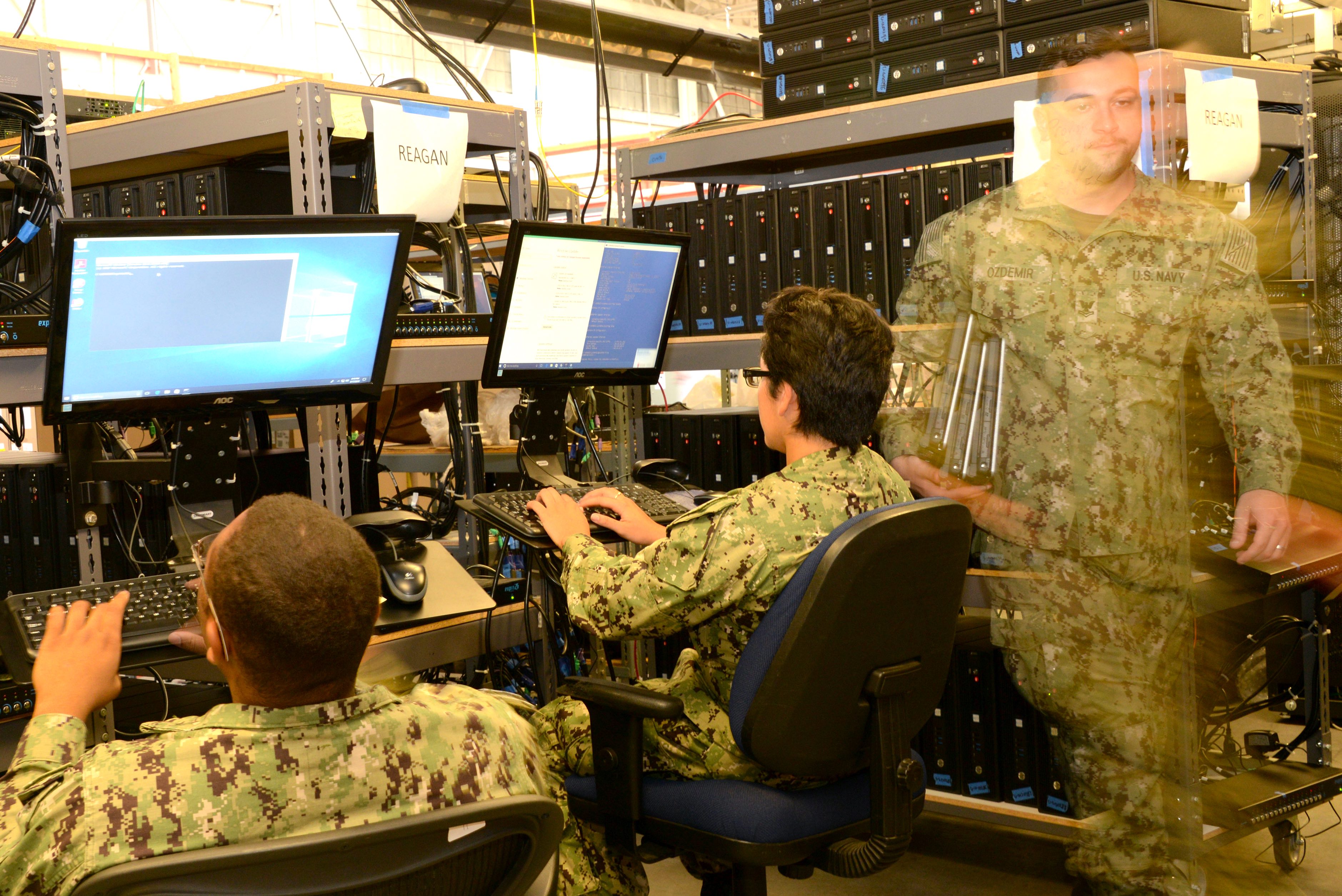
SAN DIEGO, Calif. – A recent pilot program tested in the fleet to provide information systems training virtually to shipboard sailors proved promising enough that the Navy plans to implement it sometime this summer. The new regime is enabling students to learn and work on the exact IT systems they will operate on their ships, said the commander of Naval Information Forces.
The Consolidated Afloat Networks and Enterprise Services Training Virtual Environment will provide a schoolhouse for a student, using a desktop or laptop and a network connection and linked up with an instructor for coursework that’s realistic, relevant and up-to-date with their particular ship’s systems, Vice Adm. Brian Brown, who commands Naval Information Forces, said Monday at WEST 2020, a defense conference co-hosted by the U.S. Naval Institute and AFCEA.
“It’s pretty exciting because we have not had that capability,” he said. Earlier in the day, Brown saw a CANES TVE demonstration by the contractor, Deloitte Consulting LLP, which was awarded a $23 million Navy contract in 2018.
Students and instructors have grappled with training that hasn’t replicated or fully reflected the onboard systems infrastructure that sailors encounter when on their ships, which can vary by ship. While the Navy had fielded to the schoolhouse the same equipment the fleet uses, Brown said, shipboard sailors haven’t always had the latest technology available.
“It’s hard to keep up with the technology refresh rate on all the things when you’re trying to modernize a fleet,” he said, “so over time, the equipment we are training our CANES operators on became stale. It was out of sequence with the majority of the fleet.” Often, he added, “whatever they would see in the fleet would not exactly be what they would see” in the coursework.
So the virtual training environment ensures that’s no longer the case, and sailors will learn from training virtually on systems with the look and feel of the same systems and versions installed aboard their ships, Brown said during a media round table following after his briefing.
He’s how CANES TVE works: A student logs in and selects the particular version of hardware and software of CANES on their ship for whatever they are training to, and the instructor sets up the virtual environment. “It would send a series of instructions to the cloud, and it would be built into the virtualized environment all the servers that make up the CANES stack,” Brown said. “It would be fed back to the student’s laptop, and they would see the environment, and it would replicate and operate exactly like their version” on their ship.
The instructor takes the student through various training, such as taking down a ship’s email and working them through restoring that capability, “all in a virtual space,” he said.
NAVWAR has developed the virtual environment with PMW160, the Navy’s Tactical Networks Program Office, which “took on the challenge” and looked at other examples from other Navy enterprises, including undersea warfare, he added.
They then ran the CANES TVE through a pilot program with the forward-deployed naval force in Japan, including sailors training aboard the aircraft carrier USS Ronald Reagan (CVN-76) and guided-missile destroyer USS Curtis Wilbur (DDG-54), while both ships were pierside, Brown said. “They were able to bring up the instruction, with a facilitated instructor, and do that kind of background training that they couldn’t do otherwise,” he said, calling it “a significant step forward in that particular capability.”
In his role as the “I Boss,” Brown oversees the manning, training, equipping and modernization for NAVIFOR units across the fleet.
“Once the pilot is complete, this is how we’ll do classroom training through the Center for Information Warfare Training,” the IW community’s primary schoolhouse, he added. “That means that every student who sits down now will go through at a laptop, see the version that they will actually use out in the fleet – not some generic version – and you can sit down a person with CANES 1.0/1.0 hardware and software next to a kid who is going to a 2.0/3.0 ship, and they can go through the same training, but on their version.”
Brown said he didn’t know when it would be fully implemented but added, “I think it’ll go pretty quickly.”
The Center for Information Warfare Training, or CIWT, falls under Naval Education and Training Command and trains more than 20,000 information warfare professionals in annually, according to the Navy, and offers more than 200 courses for ITs as well as cryptologic technicians, intelligence specialists, electronics technicians, and officers in the IW community.





